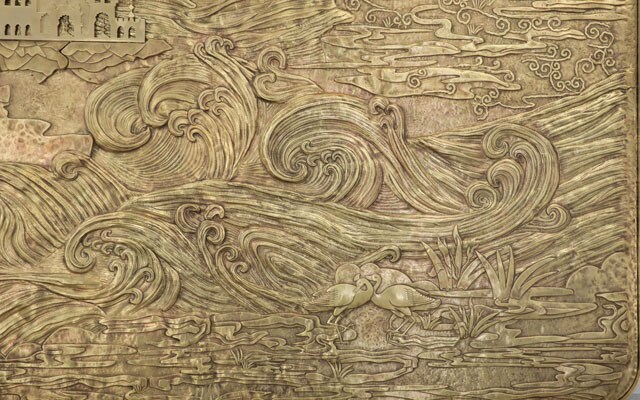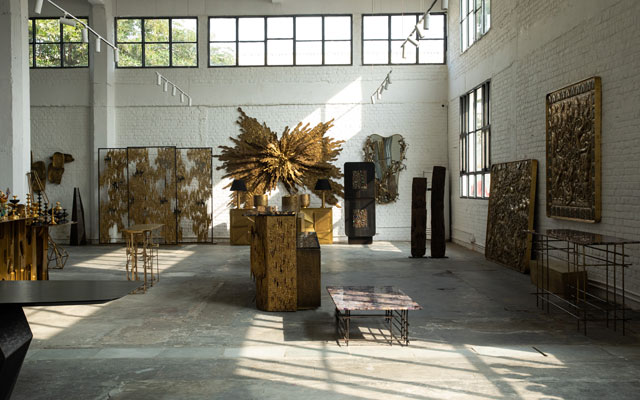Top Notch | Vikram Goyal: 'I knew I wanted to do something indigenous and soaked in excellence'
Top Notch | Vikram Goyal: 'I knew I wanted to do something indigenous and soaked in excellence'

VIKRAM Goyal was not supposed to be a designer. With a brilliant mind and a penchant for academia, his school records boast of a roster any parent would be proud of – Engineering at BITS Pilani, a degree in Developmental Economics from Princeton, an Ivy League university, and then a first job at Morgan Stanley.
How does one go from those academic heights to design and sculpture? “Because I grew up in Delhi, and you cannot escape being culture-rich here,” he smiles. “My grandparents lived in Rajasthan, so you can imagine the visual language one sees all around.” Goyal, 57, was completely obsessed with India. Even at the financial services giant Morgan Stanley, he was interested in selling the India story to his investors.

“This was in 1998, and all the big companies in India were the big tech companies. But soon the TMT (tech, media and telecom and media boom) happened. “I wanted to set up a dot-com, but within three months of me coming to India, there was a giant bust. It was just as well, as I knew I wanted to do something indigenous soaked in excellence,” he says. This is when he co-founded Kama Ayurveda (along with Vivek Sahni, Rajshree Pathy and Dave Chang) in 2002. “It was a great Indian idea, and it was related to our history and culture,” he says.

Two years later, his sister Divya and he joined hands, and names, and formed a home decor store called Viya Home. With Viya, Vikram began to work with metal and sculptural pieces. He wanted to create decorative items that were hugely artistic in their making, and completely modern in their function. “We called it ‘material intelligence’. These were items that appealed to a higher level of consciousness. This was my objective.”
Viya Home’s modern Indian design language led Goyal to form the Vikram Goyal design studio, an elevated space which is a tribute to the artisanal and the contemporary. His repoussé work is arguably the best in the world. And if you have been following Goyal’s genius even in a couple of articles or social media posts, you would instantly recognise it. That truly is the mark of his genius, that he has managed to create a signature in the play of metal and the mastery of human hands. “No country has the abundance of craft like India does, nor the number of artisans we have. Our repoussé panels, that months to make, but such is the level of their commitment. Indians have an attraction to learning, to religion, to anything that celebrates the richness of visual culture,” he says. “When I returned to India after 12 years abroad, I began to see all of this in a new light. It’s hard not to be an advocate and an ambassador. And let me tell you, we are only scratching the surface yet.”
This also led him to bring out a book on the pichwai of Nathdwara last year. The ‘Shringara of Shrinathji’ is a collector’s edition that offers a closer look at his family’s collection of paintings of the Shrinathji. “My grandfather inherited this book of miniatures. My grandfather’s great-grandfather was the prime minister of Udaipur and a great believer of Shrinathji. The priest of the temple had given him this book of paintings, where his different adornments were highlighted. Apart from being visually compelling, the book is also an important tool for lovers of art or students of art,” Goyal explains. “I had met Bipin Shah of Mapin (he is a promoter along with Mallika Sarabhai) just before the pandemic, and we worked right through it to bring the book together.”

Goyal and his beautiful pieces of sculpture made their debut at the India Art Fair this year. Each of the 7-8 pieces he showed was grander than the other. “The idea was to string together items of belief. For example, our Tree of Good Fortune was made in the style of Brutalist architecture, as a metaphor for the world around us. I hung amulets on this which visitors could just pluck and take as a memento, each one of these amulets had an elephant, a hamza, or a conch motif. Our Love Seat sculptural bench spoke of love, friendship and community in a public space. The Towering Banyan was inspired by banyan trees that everyone prays to in India. The Monsoon Pichwai had no deity but peacocks in various stages,” he smiles. Goyal believes the time for India’s craftsmanship to shine is now. “After two decades of tom-toming the India Modern story, there has never been a better time for crafts and design than it is today.”
If a man is known by the company he keeps, Goyal’s inner circle is a tight network of India’s contemporary geniuses. There’s Tarun Tahiliani (a Wharton alumnus who veered into fashion), filmmaker Mozez Singh, jewellery great Hanut Singh among others. “But I also have friends from Pilani, who are not from the creative world,” he laughs. “This means I am left- and right-brained both. I’m blessed to have smart and kind people around me. But being a good person is the most important quality,” he says.
Namrata Zakaria is a seasoned writer and editor, and a chronicler of social and cultural trends. Her first book, on late fashion designer Wendell Rodricks’ Moda Goa museum, is due to be published shortly. Zakaria is especially known for her insider’s take on fashion, luxury and social entrepreneurship in India. Her writing is appreciated for shaping opinions, busting myths, making reputations and sometimes breaking the odd career. Zakaria is also involved in putting together philanthropic efforts in the field of economic and environmental sustainability.
Read all the Latest News, Trending News, Cricket News, Bollywood News, India News and Entertainment News here. Follow us on Facebook, Twitter and Instagram.
What's Your Reaction?



























































